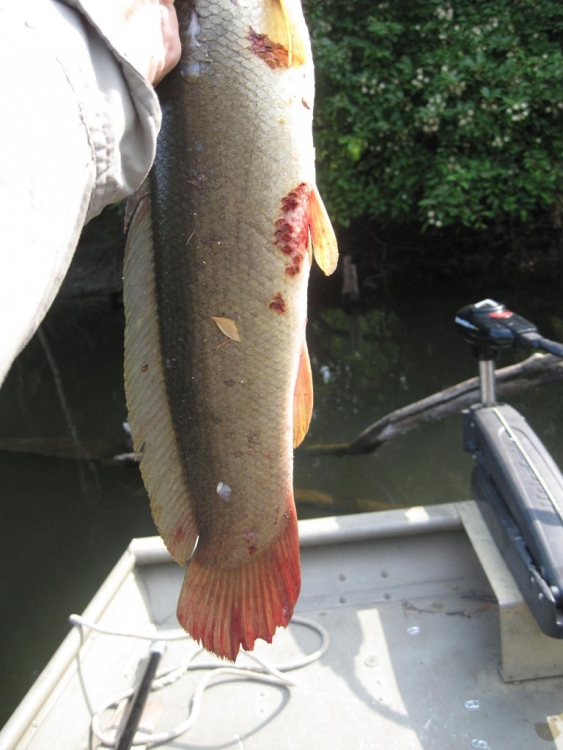Course:ECON371/UBCO2011WT1/GROUP4/Article3

Article Link
Link to article
Company faces $1 million sanction for polluting Ogeechee
Summary
This article considers a conflict between King America Finishing Inc., the state of Georgia, and residents from an area surrounding a section of the Ogeechee River, where over 38,000 fish died this may. After the fish kill occurred, the largest in the states history, the Georgia state Environmental Protection Division (EPD) investigated for possible causes. It was found that King America Finishing Inc., had been making unauthorized discharges of flame retardant chemicals into the river for the past 5 years. During this time the EPD had inspected the site, but had apparently not caught the problem. Prior to 2006 it did have a permit. As a penalty, King America Finishing was ordered to update its treatment and spend over $1 million on environmental projects that would benefit the Ogeechee River. With this decision everyone saves face as the EPD is not officially blaming the firm, and the firm is not accepting full responsibility.
This penalty did not sit well with the local residents who initiated protests in response. Their points are that the fine does not fit the crime, they are concerned about pollution of the water table and therefore their drinking water, in addition to perceived damage such as a drop in property values. It was also stated that this has been an on-going issue since 1988. Some locals suggested that King Finishing should be shut down until the owners are willing to drink the water that comes out of the discharge pipe. Locals also reported that the area had been a refuge for wildlife, however, the river was now devoid of its previous signs of life. There is now a class action lawsuit against the firm.
Analysis
If the firm decided it was not going to renew it's permits after 2006 there may be a good chance that the firm looked at this as a way to reduce its abatement costs. Clearly, by the extent of dead fish in the river, there was little being spent on processing the discharge. They may have incurred the cost of paying off the EPD officials since they did inspect the site "several times" and found nothing. It is also plausible that the officials were under-qualified for the inspection of that firm. This could be because of reductions in the budget for inspections. Either way, it appears that the firm maximized an opportunity to reduce its abatement costs.
The residents did not see the $1 million dollar "penalty" as fair compensation for the damages wrought to both the public goods of the area and their personal health. Descriptions of the damage perceived by the residents were numerous. One resident described how the perceived reduction in the public good of a clean and healthy river reduced the saleable value of his riverfront property. The owner of a local fishing shop describes the lost sales due to the state of the river. Others are concerned over their personal heath due to the possibility of the pollutant leeching into the water table. Many residents get their drinking water from these shallow wells.
The articles mention permits, so we are assuming that this is a standards based system. There is also no mention of back-taxes, so this supports the assumption. The quantity of allowable emissions set by the EPD is clearly pointless if inspectors can be on-site several times over a five-year period and not find evidence of any illegal discharges. This speaks to the importance of properly funded enforcement practices or applying alternate principles in charging for pollution.
If Marginal Damages are valued as high as the local residents suggest, and if enforcement was to be funded at appropriate levels (meaning higher permit costs), would the system be able to operate at the efficient point and cause limited damage to the ecosystems? Moreover, would the firm be profitable at this point?
Prof's Comments
I think you could also consider this a negligence rules type of case, particularly with the actions that the firm is taking now. It has resumed discharge of pollutants into the river, but for the highly toxic ammonia. So, it will do what it has to do, but no more.
The threat of a class action lawsuit is in effect a claim by the local residents that they have a property right, the right to a clean river with fish in it.
7.5 / 10